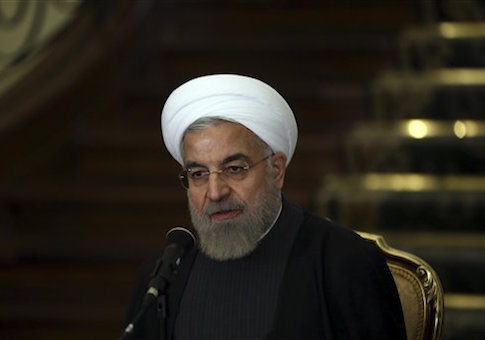JERUSALEM—The lifting this weekend of economic sanctions that have been imposed on Iran since 2007 will see an estimated $100 billion in frozen funds begin to flow into Tehran’s coffers. Israel will be closely following the money to determine its impact on Iran’s military posture and on its assistance to militant entities on Israel’s borders such as Hamas in Gaza and Hezbollah in Lebanon.
Tehran has already designated $21 billion to rehabilitate its outdated military, writes Alex Fishman, military correspondent of Yediot Achronot. "They desperately need to update and upgrade their weapons systems."
It is allocations to Hamas and Hezbollah that most immediately concern Israel since these carry the possibility of near-term repercussions. Hamas is reportedly rebuilding its network of attack tunnels destroyed in the Gaza War in 2014—tunnels that will eventually lead under the border into Israel—and is preparing for the next round. Hezbollah has been the recipient over the years from Iran and Syria of some 100,000 rockets but is constantly seeking to expand its arsenal, particularly with guided missiles. Israel has said it will continue to send its air force to interdict shipments of "game-breaking" armaments via Syria to Hezbollah.
Anthony Cordesman of the Center for Strategic and International Studies, says that neither Hamas nor Hezbollah would be able to absorb more than a few million dollars in cash and weaponry over time. "You’re not going to turn Hezbollah into a major conventional force," he says. As for Hamas, access by sea is blockaded by Israel and land access is closely monitored by both Israel and Egypt. "You can’t get to them. You can’t supply them. I think we need to keep this in careful perspective."
There is, however, nothing to prevent Iran from rearming itself and this they have begun to do by engaging in extensive talks with Russia. Tehran has already purchased four units of the once-cutting edge S-300 aerial defense system, which is regarded as Iran’s prime defense against possible attacks by Israeli or Western air forces on its nuclear facilities. (The Russians themselves have replaced the system with the S-400, which it has deployed around its airbase in Syria.)
An arms delegation from Russia has been in Tehran since last March negotiating the sale of major items such as the Sukhoi Su-30 fighters (counterpart of the American F-1) and advanced Yakhont anti-ship cruise missiles, which could, in a future conflict, be directed against American warships in the Persian Gulf. (An earlier version of the Yakhont hit an Israeli gunboat off Beirut in its 2006 war with Hezbollah, causing a fire but not sinking it.) Also being discussed is the possible sale of advanced T-90 tanks and the possibility of restarting production of the older T-72 tank, which was built in Iran in the past under Russian license.
Elizabeth Rosenberg, who worked on Iranian sanctions at the Treasury Department, notes that Iran’s GDP in 2014 was $400 billion. Prosperity will not come from the unfrozen $100 billion, she says, but from trade with the world and from foreign investments if Iran opens up to the world. "This would be an incentive for Iran to stick to the agreement," she said.
Most of the $100 billion is expected to go towards rebuilding the country’s shattered economy. For the West, and particularly for Israel, the question is whether economic improvement will lead to a general loosening up in Teheran and its adoption of more moderate positions. A decade or so down the road, when the current agreement with Iran expires, the question of its nuclear future awaits.
